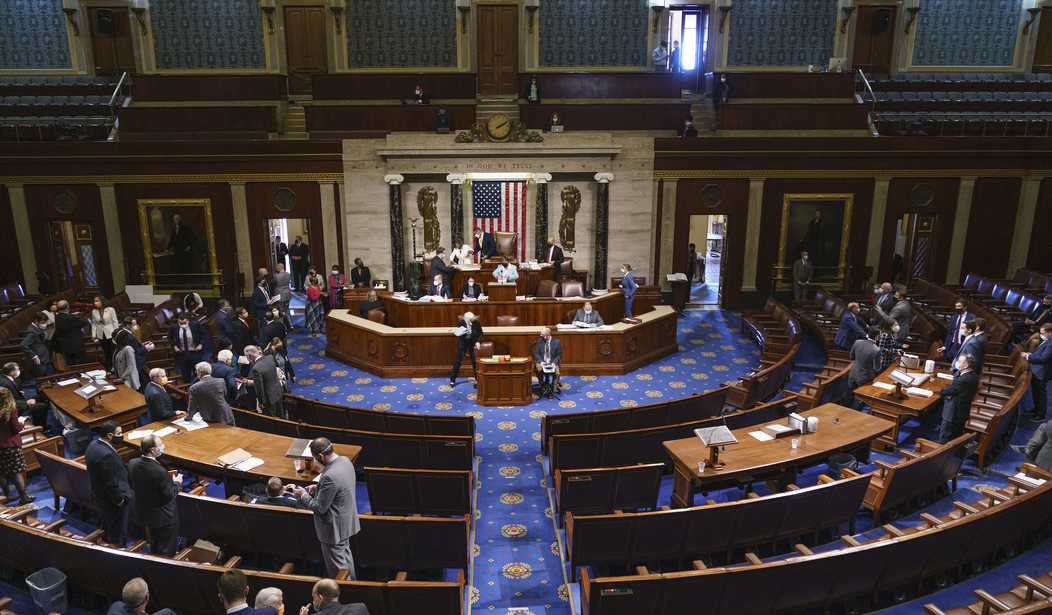(The opinions expressed in guest op-eds are those of the writer and do not necessarily represent the views of RedState.com.)
Rep. John Larson (D-CT) has reintroduced the Social Security 2100 Act: A Sacred Trust in Congress, which promises to expand benefits and strengthen Social Security.
It does neither. Even at a high level, the chief takeaway for the average voter is: This legislation does not fix Social Security, and in many ways, it creates conditions that will make the system as a whole even less stable.
Even the most partisan politician should take note of how little time can be bought even with trillions of dollars in new revenue. We are no longer kicking the can down the road. This proposal shows that even trillions of dollars in more revenue will at best kick the can little more than a few feet.
Change in the program’s finances is desperately needed. In little more than 12 years, the system is more than likely to fall short of revenue, causing benefits to be reduced by 22 percent. Another way to look at this timeline is a typical 75-year-old now expects to outlive Social Security’s ability to pay scheduled benefits in full.
Larson’s proposal combines temporary spending now with higher taxes that increase with time. According to the actuaries at the Social Security Administration (SSA), the changes would raise roughly $11 trillion by phasing out the cap on taxable wages by 2050, which more than offsets the increase in spending on $1 trillion — almost all of which comes in the form of new benefits expiring after five years.
Combined, the SSA believes the proposal would extend the depletion date of the Trust Fund to 2038. In exchange for $10 trillion, workers would get an extra four years of benefits, provided that all of the new benefits created by this legislation are terminated in 2027.
Historically, the “Social Security 2100” brand meant structural changes would enable the program to pay out more benefits through the end of the century. Now the goal for the program is to cover payments until 2038.
Supporters claim that this extension would give Congress more time to ensure long-term solvency of the program. In fact, these changes would set in motion a benefits crisis in 2026 because the law would phase out all of the expanded benefits after a five-year trial period. Thus, the plan for Social Security is to replace the benefits crisis of 2034 caused by insufficient funding with a man-made crisis in 2026 caused by insufficient planning.
The new benefits appear to raise the near-term cost of the program by 10 percent. That is more than $100 billion per year. Even the casual observer of politics needs to understand that dates like 2038 and 2034 go out the window if the expanded benefits remain in place beyond what is appropriated in the legislation.
It isn’t possible to discuss the wisdom of the new benefits because there are no cost projections past the initial five-year window. To illustrate, the SSA estimate of this proposal indicates the COLA to use CPI-e would cause the actuarial balance to decline by .01 percent. If enacted independently, the cost would be about 12 times larger because it would be permanent. That estimate does not, however, include the application of the new CPI to the expanded benefits. Thus, we have no idea what these changes will cost in 2026.
We are shortening the window for crisis from 12 years to five, wherein Congress has already played what is arguably the last major revenue card available to policymakers. In 2027, beneficiaries will collectively face $150 billion in benefit cuts, or about 10 percent of all payments. So, it is only reasonable to ask supporters where they believe this money will come from considering that they have already eliminated the cap on taxable wages. This is a question that will be encountered in five years. Perhaps Congress should be thinking about it now.
This legislation should be named “Social Security 2038: The Brutal Truth.” The brutal truth is that Congress has ignored Social Security for so long that we aren’t able to balance the system’s finances even with draconian tax increases.
The last time that Rep. Larson and company looked at Social Security was in 2019, when the program’s unfunded liability was $6 trillion smaller. The driver of that growth is the passage of time, and it reflects the lack of interest in a program on which millions depend. In 2020, the system generated roughly $700 billion in unfunded liabilities as a matter of moving the valuation date forward by a year. While that sum may not sound large in the context of government spending, keep in mind that cost occurs because of one year, and Congress has done nothing for four decades.
The Social Security 2100 Act: A Sacred Trust has 200 cosponsors in Congress, promising to expand benefits and strengthen Social Security. Once again, this legislation does neither.
It makes Social Security unsustainable in five years, rather than 12. It pushes the program off a financial cliff and depends upon a future Congress to find ways to pay for it.
Brenton Smith is a policy advisor at The Heartland Institute, with work appearing in nationally recognized publications including Barron’s, Forbes, MarketWatch, The Hill, USA today, and more.













Join the conversation as a VIP Member